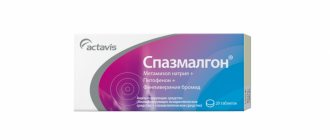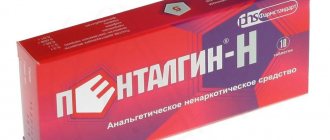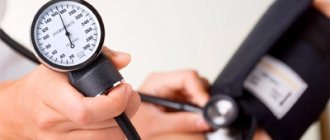Aphobazole lowers blood pressure if it has increased after nervous overload. During stress, adrenaline is synthesized in the human body. Its production provokes contraction of blood vessels, which leads to an acceleration of heart rate, the development of tachycardia and increased blood pressure. Continuous stress causes blood vessels to constrict, leading to excess blood pressure.
By satisfying the agents to which Afbazol belongs, it helps in the fight against strong worries, eliminates anxiety in patients suffering from cancer, activates vitality, and normalizes sleep.
Afbyazole does not increase or decrease blood pressure, but prevents it from jumping, improves the results of hypertension.
Composition and appearance
The drug, which was recently produced by a pharmaceutical company from Russia, has managed to gain popularity as one of the best remedies to quickly stop the attack of depression. Afbezol is produced in the form of white tablets that are tasteless and odorless. In pharmacies the drug is sold in blisters # 25, 10 or in small polymer jars after 50, 100 and 30 pieces.
The active substance is Fabomotisol hydrochloride, which contains additional substances such as:
- lactose;
- starch;
- cellulose;
- magnesium stearate;
- Milk sugar.
This agent may reduce high blood pressure if it is associated with stress because it relieves nervous tension and anxiety. Tablets are available in 10 and 5 mg active ingredient strengths.
Features pharmacological actions
A drug from the antsjolithicians group calms the nervous system, but does not reduce concentration, does not impair memory, and does not cause addiction. The pharmacological effect of Afbezole is aimed at eliminating:
- insomnia;
- Fear of feelings;
- depression;
- emotional stress;
- apathy;
- irritability.
The drug does not disrupt the functioning of the nervous system, but reduces the symptoms of stress, which is especially dangerous for people suffering from hypertension, heart disease and blood vessels. Excessive nervous tension can increase blood pressure, and afbiazole reduces them because it inhibits the response that occurs as a result of stress, but hypertension cannot be healed using this medicine alone.
The drug is effective at the first signs of stress, which are:
- Accelerated heart rate;
- muscle spasms;
- Loss of sleep and appetite;
- Extreme thirst;
- Improper sweating.
Afbezolol restores blood pressure to normal because it eliminates stress, provokes its increase, reduces the number and amplitude of surges. In the treatment of hypertension, this medicine is used only as an addition to the main treatment regimen.
- relief of attacks;
- sleep restoration;
- Elimination of dizziness;
- Reduced sweat secretion.
Within 5 days from the moment of taking the sedative medicine, the person feels much better. This effect remains even after 2 weeks if the patient stops using it. Whether Afeazole lowers blood pressure depends on what is causing it to rise. The drug cannot cure a high blood pressure crisis.
The use of Afobazole in the treatment of paroxysmal atrial fibrillation
Despite significant advances in understanding the electrophysiological mechanisms of initiation and maintenance of AF, treatment of paroxysmal forms of this arrhythmia in most cases remains symptomatic. Traditional treatment tactics for recurrent AF are reduced to drug (electrical) cardioversion (CV) and protective antiarrhythmic therapy (AAT) aimed at maintaining sinus rhythm (SR) [5]. The benefits of restoring and maintaining SR are beyond doubt: maintaining optimal heart rate control, physiological rhythm regulation, restoring atrial pumping function, maintaining normal cardiac electrophysiology, preventing left atrial dilatation and reducing the likelihood of left ventricular dysfunction, improving quality of life and increasing exercise tolerance. Antiarrhythmic drugs (AADs) and surgical catheter interventions are currently the main methods of treating paroxysmal forms of AF. However, AAT therapy has limited effectiveness and is associated with a significant risk of proarrhythmic or noncardiac side effects. These limitations in the use of antiarrhythmic drugs have led to the development of specific therapeutic strategies [6]. It has now been proven that mental disorders worsen the course of arrhythmias, in particular AF, by complicating clinical manifestations and reducing quality of life (QoL). Of no small importance is the increase in the number of hospitalizations, which are not always justified [7]. The development of anxiety, fear of expecting new episodes of arrhythmia, and autonomic disorders in patients with AF largely determine the need for the use of psychopharmacological agents in the treatment of this arrhythmia. Most patients with paroxysmal forms of AF, especially with its sympathetic-dependent variant, and subjectively poorly tolerated paroxysms, need to be prescribed drugs that have an anxiolytic effect and normalize the tone of the autonomic nervous system. However, the use of benzodiazepine tranquilizers is limited due to severe side effects (weakness, lethargy, lethargy, inability to concentrate) [8]. Of particular clinical interest is a fairly large group of patients with paroxysmal AF, in whom treatment tactics can be reduced only to the prescription of relief therapy. This group of patients experiences rare, well-tolerated paroxysms of AF, which nevertheless require hospitalization. Oral protective therapy is not a first-line treatment option for these patients. The optimal treatment method is a “pill in a pocket” approach, in which the patient takes a single dose of AAP at the onset of AF. The use of selective anxiolytics in this category of patients seems promising. Such a study will allow you to form your own opinion about the effectiveness of the drug, accurately assess the contribution of anxiety and depressive disorders in the genesis of AF, minimize the combined effect of anxiolytics and other drugs, and develop practical recommendations for the use of Afobazole in patients with paroxysmal AF. The purpose of this study is to study the effect of Afobazole on atrial arrhythmogenicity in patients with paroxysmal atrial fibrillation without pronounced structural changes in the heart. To achieve this goal, the following tasks were formulated: a) to study the clinical effectiveness of 6-month therapy with Afobazole in patients with paroxysmal forms of AF; b) evaluate the protective antiarrhythmic effect, safety and tolerability of Afobazole in the studied categories of patients; c) to determine changes in the course, frequency of occurrence, tolerability and duration of episodes of AF during treatment with Afobazole. Material and methods In the clinic of the FC SK&E named after. V.A. Almazov examined 65 patients with severe psychosomatic disorders aged from 19 to 60 years and a documented episode of AF lasting less than 48 hours. The criteria for inclusion in the study were: a history of palpitations with a sudden onset no more than once a month, subjectively well tolerated, the absence of hemodynamic disturbances during paroxysms (shortness of breath, pre- and syncope), and the absence of protective antiarrhythmic therapy. Exclusion criteria were: duration of an AF episode more than 48 hours, sinus bradycardia, tachy-brady syndrome (resting heart rate less than 50 beats/min. or repeated sinoatrial blocks during the day), signs of ventricular preexcitation, bundle branch block, coronary artery disease, dilated or hypertrophic cardiomyopathy, history of HF, EF less than 50%, valvular pathology, chronic cor pulmonale, long QT interval or Brugada syndrome, data on previous episodes of 2-3rd degree AV block, history of thromboembolic episodes, renal or hepatic failure, hypokalemia , pregnancy. Also excluded from the study were patients with severe personality changes that prevented the examination, caused by organic damage to the central nervous system, or severe mental and behavioral disorders. The diagnosis of the underlying disease was established on the basis of a clinical examination: analysis of the patient’s complaints and anamnestic information, physical examination data, results of laboratory and instrumental research methods. The study of the clinical picture included a physical examination, laboratory research methods - clinical blood and urine tests, study of lipid and carbohydrate metabolism, determination of acute phase reactions, acid-base status, serum electrolytes, thyroid hormones. If necessary, patients consulted an otolaryngologist, neurologist, and endocrinologist to exclude pathologies of the ENT organs, central nervous system, and diseases of the endocrine glands. Instrumental methods for studying the heart included an ECG in 12 standard leads. According to indications for diagnosing coronary artery disease, bicycle ergometry, transesophageal ischemic test, and stress echocardiography with physical activity were performed. To exclude pathology of the valvular apparatus, determine the size of the cavities and the thickness of the walls of the heart, the value of the ejection fraction and minute volume of blood circulation, two-dimensional echocardiography was performed - sectoral scanning and research in M-mode on a CFM-750 device from Sonotron (Germany). X-ray examination included chest radiography, and in some cases, spiral computed tomography of the heart was used. Daily (multi-day) ECG monitoring in most cases was carried out using the Cardiotechnika-4000 device (Inkart, St. Petersburg). To exclude abnormal conduction pathways, transesophageal cardiac pacing was performed according to a standard protocol (Astrocard-Polysystem-EP/L, Meditek, Moscow). Nosogenic mental reactions (NPR) were identified using a clinical-psychopathological research method [9]. The level of anxiety and depression was determined using the Zung scales. Upon admission, all patients were examined using the MMPI technique as modified by the Research Psychoneurological Institute named after. V.M. Bekhterev [10]. The physical and emotional components of the quality of life of patients with AF were assessed initially upon admission of the patient to the hospital and at the end of the study. To assess QOL, a technique designed specifically for patients with arrhythmias was used [11]. To relieve an episode of AF, the Ic class drug propafenone was used in a single dose in accordance with the patient’s weight. After the drug was prescribed, ECG and blood pressure were monitored. Treatment was considered successful if AF was relieved within 6 hours and there were no side effects: arterial hypotension (BP less than 80 mmHg), symptomatic bradycardia, shortness of breath, pre- or syncope; proarrhythmic effects: (transformation of AF into atrial flutter (AF) or atrial tachycardia, episodes of sustained or unstable ventricular tachycardia). 23 patients who took only the selected AAP formed the control group. The main group consisted of 22 patients who constantly took Afobazole 30 mg/day, and in case of paroxysm, additionally propafenone. Treatment was regarded as successful if the number of paroxysms was reduced, the relief time was shortened without additional administration of AAP, and there were no side effects or proarrhythmic effects. At the outpatient stage, in the event of an episode of AF, patients independently took the drug in a selected dose during the first 10 minutes after the onset of paroxysm. Patients independently filled out a form that noted the number of episodes of arrhythmia, the exact time of onset of the paroxysm and the time of taking the drug, relief of AF, any side effects, and changes in emotional status. Feedback was provided in some cases using transtelephone ECG monitoring or telephone calls. Control examinations were carried out every 2 months in cases where there were no side effects and the effect of the drug was maintained. In the absence of a relief effect after 6-8 hours, patients, as a rule, were hospitalized in the hospital. The follow-up period was on average 6 months. Results and discussion When comparing groups of patients who took and did not take Afobazole, there were no significant differences in average age, history of arrhythmia, initial blood pressure level, or previous use of AAP. Taking into account the task, patients in both groups either had no signs of organic heart pathology or had minor heart disease without pronounced structural changes. The values of the ejection fraction and the diameter of the left atrium in the selected groups did not differ significantly (the values of the ejection fraction averaged 61±5%, the diameter of the left atrium - 40±3 mm). Of the examined 65 patients with a duration of AF paroxysm of less than 48 hours, 48 patients (74%) were included in the study; the rest were withdrawn from the study due to the presence of exclusion criteria. In the hospital, the oral dose of propanorm in the included patients averaged 550±34 mg. Of these, three patients were excluded from the outpatient phase for the following reasons: in two, there was no relief effect of the drug within 6 hours; in the remaining patient, taking the drug was accompanied by the occurrence of transient hypotension. The remaining 45 patients were discharged with a recommendation to take propanorm for outpatient relief of recurrent AF, of which 22 patients were constantly taking Afobazol. In these patients, the duration of AF before hospital treatment was from 2 to 48 hours; the time interval for transformation into SR was not assessed, since all patients took different AAPs. The relatively large group of patients prescribed an oral AF drug compared with other studies [16] is likely due to the special sample size of the group. The mean follow-up period was 17±4 weeks. Of the 22 patients in the main group, one dropped out of the study due to spontaneous discontinuation of the drug. Of the 23 patients in the control group, three dropped out of the study for one reason or another. In the control group of 20 patients, 3 (15%) had no relapses of AF during the observation period, in the main group - in 7 (33%). This result can be explained either by a higher transformation into an asymptomatic form while taking an axiolytic, or by a “levelling” of the psycho-emotional state of these patients. In the control group, 20 patients had 123 episodes of AF. The time from the onset of paroxysm to taking propanorm was 5-10 minutes. The drug was effective in 117 of 123 episodes. The average time for relief of AF paroxysms was 110±63 minutes. In 4 cases, paroxysms were stopped 6 hours after taking propafenone, and the patients did not seek medical help. In 2 cases, despite the development of paroxysmal AF, the patients did not take the drug. Most of these cases were explained by good tolerance of arrhythmia episodes. Of the total number of episodes of AF, in 5 cases it was necessary to seek medical help: in one patient the paroxysm lasted more than 8 hours (it was stopped without additional treatment in the hospital emergency department), in two patients an accelerated heart rate was recorded that arose after taking the drug and also did not require additional treatment. In the remaining cases, hospitalization was necessary to continue treatment. During the observation period, while taking oral relief therapy with propafenone, there was no decrease in the number of paroxysms compared to the beginning of the study, although the number of hospitalizations and requests for medical help decreased significantly. Side effects and proarrhythmic effects during one or more episodes were noted in two of 20 patients taking the drug. In one case, only at the fourth paroxysm of AF, a 1:1 paroxysm of atrial fibrillation was recorded on the ECG, which required changing the AAP. Non-cardiac side effects were recorded in the remaining patients. By the end of the study, of all the patients in the control group, one required protective therapy with propafenone, followed by a good effect. In general, the relief effect at the outpatient stage was noted in 87%. In the main group, 21 patients had 83 episodes of AF (p<0.001). The time from the onset of paroxysm to taking propafenone was also 5-10 minutes. The drug was effective in 80 of 83 episodes. The average time for relief of AF paroxysms was 98±42 minutes (p<0.001). In 2 cases, paroxysms were stopped 6 hours after taking propafenone, and the patients also did not seek medical help. In 2 cases, despite the development of paroxysmal AF, the patients did not take the drug. In one case, the paroxysm lasted more than 10 hours, requiring hospitalization to continue treatment. Compared with the control group, there was a statistically significant decrease in the number of paroxysms, the duration of arrhythmia episodes, easier tolerability, a tendency to transform into an asymptomatic form and a decrease in the number of hospitalizations and requests for medical help. A proarrhythmic effect during one or more episodes was noted in one patient taking propafenone while taking Afobazole continuously: when the third episode of AF was relieved, transient bradycardia was recorded. No noncardiac side effects were noted in any case. Also, during the observation period, there were no cases of changing AAP or the need to prescribe protective AAT. The change in the nature of the course of paroxysmal AF while taking Afobazole is presented in Figure 1. The analysis showed that in patients with paroxysmal AF, among the identified nosogenies, the main share was occupied by hypernosognosic reactions (exaggeration of the severity of symptoms of the disease, anxiety, fear, concern about one’s condition). Among hypernosognosia, anxiety-phobic disorders were more often diagnosed. Hyponosognosic reactions, represented by the syndrome of beautiful indifference, were observed in a small number of patients. Both groups presented high levels of anxiety, while levels of depression were significantly reduced. It is known that the presence of AF is associated with a significant decrease in QoL [12]. It seems that the most pronounced impact on the quality of life of patients with AF is primarily exerted by the severity of symptoms and disturbances in the psycho-emotional state. In the study, in patients without structural heart disease and with normal hemodynamic parameters, the decrease in QOL directly depended on the personal (subjective) reaction to emerging episodes of arrhythmia. In the Afobazole group, in most cases, a reduction in the manifestations of NPD was noted, which can be explained by the predominance of hypernosognosic reactions in these patients. In the group of patients who received only reversing antiarrhythmic therapy, scores on the depression and anxiety scales decreased slightly, while while taking Afobazole, scores on the Zung anxiety and depression scales significantly decreased. Thus, the study showed a close connection between the severity of ADR and the occurrence of episodes of AF. It seems that this relationship is due to the fact that patients with depressive disorders have impaired autonomic regulation of heart rhythm (decreased parasympathetic and increased sympathetic tone), which increases the risk of AF. It was previously shown that a prognostic model built with the inclusion of depression among the generally accepted predictors of AF had a higher predictive value [13]. In addition, this study, focused on the choice of optimal bought therapy, shows the fundamental possibility of using the IC of the IC of the Class Class of Prophenon and the axiolithic of apobabazole for the outpatient (independent) relief of Paroxy FP. The use of the strategy of “pills in your pocket” significantly reduced the number of appeals for medical help, which contributed to the improvement of the psychological status of patients. At the same time, the addition of apofobazole was accompanied by a pronounced anxiolytic effect without sharp sedation, effective correction of vegetative disorders, the lack of drug dependence and cancellation syndrome. In addition, the analysis showed that the inclusion of apobasol in the treatment regimen of the paroxysmal form of the FP was accompanied by the restoration of the ability to action in patients with anxious conditions and improved sleep function. In general, it can be stated that the use of this approach seems to be an effective and safe method of stopping rare episodes of FP after breeding patients according to basic clinical signs and the results of inpatient therapy. Further studies are presented to the determination of the place of apobasole in the treatment of patients with various forms of FP, especially in patients with predominantly asthenic personal features in the form of anxious imaginary, uncertainty, increased vulnerability and emotional lability, a tendency to emotionally stress reactions. Conclusions 1. The appointment of apofobazole in patients with a paroxysmal form of atrial fibrillation is an effective and safe treatment method. 2. Treatment with a aphobazole of patients with a paroxysmal form of atrial fibrillation without pronounced structural changes in the heart was accompanied by a decrease in the frequency of paroxysms, the duration of episodes of arrhythmia, easier tolerance, there was a tendency to transform into the asymptomatic form. 3. The use of apobobazole was accompanied by a decrease in anxiety, asthenia and irritability for course use, there was no decrease in therapeutic qualities with long -term use. 4. The probable mechanism of the positive impact of the use of apobasole on the paroxysmal form of atrial fibrillation is the leveling of nosogenic mental reactions.
References 1. Kannel W., Wolf P., Benjamin E. et al. Prevalence, incidence, prognosis, and predisposing conditions for atrial fibrillation: population-based estimates. Am J Cardiol. 1998;82:2N–9N. 2. Kannel W., Wolf P., Benjamin E. et al. Prevalence, incidence, prognosis, and predisposing conditions for atrial fibrillation: population-based estimates. Am J Cardiol. 1998;82:2N–9N. 3. ACC/AHA/ESC guidelines for management of patients with atrial fibrillation. Circulation 2006;104:2118-2150. 4. Kushakovsky M.S.. Atrial fibrillation (causes, mechanisms, clinical forms, treatment and prevention) St. Petersburg 1999; 175 5. Sulimov V.A. Drug therapy for atrial fibrillation: present and future. Cardiology. 1999;7:69-75. 6. Tatarsky B.A. The use of ACE inhibitors in the treatment of paroxysmal atrial fibrillation. Russian Journal of Cardiology, 2005; 3:58-63. 7. Shpak L.V., Kononova A.G. The state of hemodynamics, emotional disorders and the individual’s attitude to the disease in the treatment of cardiac arrhythmias in an outpatient setting. Cardiology. 1999;4:33-37. 8. Smulevich A.B. Depression in general medical practice. M.: 2000.- 159 p. 9. Smulevich A.B. Mental pathology and coronary heart disease (to the problem of nosogenies). Mental disorders and cardiovascular pathology. Ed. A.B. Smulevich and A.L. Syrkina. M 1994 12-19. 10. Berezin F.B., Miroshnikov M.P., Rozhanets R.B. Methodology for multilateral personality research.-M., 1976. 11. Libis R.A., Prokofiev A.B., Kots Ya.I. Assessment of quality of life in patients with arrhythmias. // Cardiology.-1998.-N3.-S. 49-51. 12. Miller J., Zipes D. Management of the patient with cardiac arrhythmias. A textbook of cardiovascular medicine. Philadelphia: WB Saunders company. 2001. 731-736. 13. E.V. Serdechnaya, L.A. Kulminskaya, T.A. Istomina, B.A. Tatarsky. Treatment strategies and quality of life in patients with atrial fibrillation. Human ecology.-2006; 10: 34-41.
Who is it prescribed to?
A measure that is easily tolerated, for a short time, it is removed from the body with urine and feces, prescribed for neurastennia, long-term stress. AFBYAZOLE is prescribed for low blood pressure, which is observed in cases of autonomic dystonia.
Indications for use of the drug are:
- Severe fatigue;
- anxiety disorders;
- long-term insomnia;
- adaptation disorder;
- neurasthenia.
The medicine is suitable for women suffering from tension tension. Aphobazole reduces the stress that occurs when a person quits smoking or stops drinking alcohol. It is prescribed in combination with other medications in therapy:
- Lupus erythematosus;
- skin infection;
- bronchial asthma;
- Hypertension and Ischemia;
- Arrhythmia and tachycardia.
In the case of autonomic dystonia, the medicine may increase blood pressure, stimulating the functioning of the nervous system. The drug is effective for low vital levels, as it eliminates weakness and improves mood.
Asthazol helps asthenia:
- Eliminate hypersensitivity.
- Cope with constant fatigue.
- Get rid of headaches.
During menopause, the drug alleviates the woman’s condition and also alleviates the symptoms that appear with irritable bowel syndrome.
Contraindications and side effects
Afobazole is not recommended for use by children and adolescents, nursing mothers and pregnant women. The drug should not be used if you are hypersensitive to the active substance. For neurovascular dystonia, a sedative is not prescribed if the patient has very low blood pressure. It is not recommended to use the drug if you are lactose intolerant. With this disease, milk sugar is not processed in the human body.
The drug does not accumulate in the blood and rarely causes unpleasant effects such as:
- Headache;
- diarrhea and nausea;
- skin rash.
Weakness occurs with prolonged use and with repeated increases in the dose. A person complains that he constantly wants to sleep. Usually, side effects go away on their own, and only if the patient's condition is serious, caffeine sodium benzoate is prescribed.
Rules of application
Afobazole tablets are taken orally. They do not need to be chewed or washed down with juice or compote, but washed down with plain water. In the case of vegetative dystonia, with mild emotional disorders, it is recommended to drink 1 or 2 times a day. For severe neurological syndromes, the dose is increased to 60 mg. To reduce high blood pressure or vascular tension, it is enough to take an Afobazole tablet 3 times a day.
A positive result in treatment comes only with long-term use of a sedative drug. The active substance begins to act after 5 days, it manifests itself
- reduction of anxiety;
- decreased sweating;
- eliminating dry mouth;
- improved mood;
- increased concentration.
The doctor usually prescribes a course of treatment lasting one month, in some cases two or even three. The effect lasts 10 days. No addiction to the drug is observed.
Afobazol - instructions for use
Where can I buy?
Registration number : LP-006555 Trade name of the drug: Afobazol® Retard INN or group name: fabomotizol Dosage form: extended-release film-coated tablets
the only* over-the-counter anti-anxiety drug that is used once a day *according to GRLS data as of 04/01/2021
Composition per tablet:
Active substance:
fabomotizole (fabomotizole dihydrochloride) – 30.0 mg.
Excipients:
Kollidon® SR [polyvinyl acetate, povidone, sodium lauryl sulfate, silicon dioxide] - 120.0 mg, hypromellose - 25.0 mg, lactose - 23.0 mg, magnesium stearate - 2.0 mg.
Shell composition:
Opadry II 85 F18422 white [polyvinyl alcohol, partially hydrolyzed, titanium dioxide, macrogol 4000, talc] - 6.0 mg.
Description: round, biconvex, almost white film-coated tablets. On a cross section, the kernel is almost white or white with a yellowish-brownish tint.
Pharmacotherapeutic group: anxiolytic agent (tranquilizer).
ATX code: N05BX.
Pharmacodynamics.
Afobazol® Retard is a selective non-benzodiazepine anxiolytic.
Acting on sigma-1 receptors in nerve cells of the brain, Afobazol® Retard stabilizes GABA/benzodiazepine receptors and restores their sensitivity to endogenous inhibitory mediators. Afobazol® Retard also increases the bioenergetic potential of neurons and has a neuroprotective effect: it restores and protects nerve cells.
The effect of the drug is realized primarily as a combination of anxiolytic (anti-anxiety) and mild stimulating (activating) effects.
Afobazole® Retard reduces or eliminates feelings of anxiety (concern, bad feelings, fears), irritability, tension (fearfulness, tearfulness, anxiety, inability to relax, insomnia, fear), depressive mood, somatic manifestations of anxiety (muscular, sensory, cardiovascular , respiratory, gastrointestinal symptoms), autonomic disorders (dry mouth, sweating, dizziness), cognitive disorders (difficulty concentrating, weakened memory), incl. arising from stress disorders (adaptation disorders). The use of the drug is especially indicated in persons with predominantly asthenic personality traits in the form of anxious suspiciousness, uncertainty, increased vulnerability and emotional lability, and a tendency to emotional stress reactions.
Afobazole® Retard does not cause muscle weakness, drowsiness and does not have a negative effect on concentration and memory. When using it, addiction does not form, drug dependence does not develop, and “withdrawal” syndrome does not develop.
Pharmacokinetics.
After oral administration, Afobazol® Retard is well and quickly absorbed from the gastrointestinal tract. Food intake does not affect the absorption of the drug and the pharmacokinetic parameters.
The maximum concentration of the drug in plasma (Cmax) after a single dose is 47.740 + 43.252 ng/ml, after multiple doses - 27.668 + 13.770 ng/ml; time to reach maximum concentration (Tmax) – 2.1+1.1 and 2.6+1.0 hours after single and multiple doses, respectively.
Metabolism: Afobazole® Retard undergoes a “first pass effect” through the liver; the main directions of metabolism are hydroxylation at the aromatic ring of the benzimidazole ring and oxidation at the morpholine fragment.
Afobazol® Retard is intensively distributed throughout well-vascularized organs; it is characterized by rapid transfer from the central pool (blood plasma) to the peripheral (highly vascularized organs and tissues).
The half-life of Afobazol® Retard when taken orally is 8.41+5.01 hours after a single dose and 6.05+3.54 hours after multiple doses. The drug is excreted mainly in the form of metabolites and partially unchanged by the kidneys and through the intestines.
Indications for use.
Afobazol® Retard is used in adults for anxiety conditions: generalized anxiety disorders, neurasthenia, adaptation disorders, in patients with various somatic diseases (bronchial asthma, irritable bowel syndrome, systemic lupus erythematosus, coronary heart disease, hypertension, arrhythmias), dermatological, oncological and other diseases; in the treatment of sleep disorders associated with anxiety.
Contraindications.
- Hypersensitivity to fabomotizole and/or any excipient in the drug.
- Galactose intolerance, lactase deficiency, glucose-galactose malabsorption.
- Pregnancy, breastfeeding period.
- Children under 18 years of age.
If you have one of the diseases listed above, you should consult your doctor before using the drug.
Use during pregnancy and breastfeeding.
The use of Afobazol® Retard is contraindicated during pregnancy.
If it is necessary to use the drug during lactation, breastfeeding should be discontinued.
Before using Afobazol® Retard, if you are pregnant or think you might be pregnant, or are planning a pregnancy, you should consult your doctor.
Method of administration and dose.
Used internally.
1 tablet 1 time per day, in the morning, regardless of meals.
The duration of the course of use of the drug is 2–4 weeks.
If there is no improvement after treatment, or symptoms worsen, or new symptoms appear, you should consult your doctor.
Use the drug only according to the indications, method of administration and in the doses indicated in the instructions.
Side effects.
Undesirable effects that may develop during treatment with Afobazol® Retard are classified according to the following frequency of occurrence:
very often (> 1/10), often (from > 1/100 to < 1/10), infrequently (from > 1/1,000 to < 1/100), rarely (from > 1/10,000 to < 1/10) 1,000), very rare (< 1/10,000), frequency unknown (cannot be determined from available data).
From the immune system: frequency unknown - allergic reactions.
From the nervous system: rarely - headache, which usually goes away on its own and does not require discontinuation of the drug.
If you experience the side effects listed in the instructions, or they get worse, or you notice any other side effects not listed in the instructions, tell your doctor.
—>
Overdose.
Symptoms With significant overdose and intoxication, the development of sedation and increased drowsiness without manifestations of muscle relaxation is possible. Treatment. As an emergency solution, caffeine 20% solution in 1.0 ml ampoules is used 2-3 times a day subcutaneously.
If symptoms of overdose appear, stop taking the drug and consult a doctor immediately.
Interaction with other drugs.
Afobazole® Retard does not interact with ethanol and does not affect the hypnotic effect of thiopental. Enhances the anticonvulsant effect of carbamazepine. Causes an increase in the anxiolytic effect of diazepam.
If you are using the above or other medications (including over-the-counter medications), consult your doctor before using Afobazol® Retard.
Influence on the ability to drive vehicles and machinery.
The drug does not have a negative effect on driving vehicles and performing potentially hazardous activities that require increased concentration and speed of psychomotor reactions.
Release form.
Extended-release film-coated tablets, 30 mg.
20 tablets each in a blister pack made of polyvinyl chloride film and printed varnished aluminum foil.
1 blister pack with instructions for use is placed in a cardboard pack.
Storage conditions.
At a temperature not higher than 25 ºС. Keep out of the reach of children.
Best before date.
2 years. Do not use after the expiration date stated on the packaging.
Vacation conditions.
Over the counter.
Marketing authorization holder/organization receiving consumer complaints
OTCPharm JSC, Russia, 123112, Moscow, st. Testovskaya, 10. Tel., fax. www.otcpharm.ru
, 305022, Russia, Kursk, st. 2nd Aggregatnaya, 1a/18 tel./fax, www.pharmstd.ru
Taking medications and alcohol
The drug goes well with Diazepam and is used in combination with Carbamazepine. Only a doctor should choose these remedies; the wrong combination is fraught with serious consequences.
Afobazole does not react with alcohol, but the effectiveness of the sedative is significantly reduced when drinking alcohol. In case of hangover, relieves symptoms and eliminates anxiety:
- Cellulose and povidone present in the product help eliminate toxins.
- Starch prevents the absorption of residual ethyl alcohol into the blood.
- Magnesium stearate soothes and relieves irritation.
- Lactose fights apathy and drowsiness.
- For alcohol syndrome, take 2 tablets per day.
Thanks to Afobazole, blood pressure is reduced, the patient’s emotional state is normalized, and memory is improved. Immediately after taking the pill, a person can drive a car or operate equipment, since the active substance does not affect concentration.
Afobazole enhances the sedative effect of herbal infusions and is combined with antidepressants.
Combination with other substances and medications
To avoid adverse consequences, the attending physician himself prescribes all necessary and additional medications.
Afobazole can be used with carbamazepine and diazepam, but in certain dosages.
Alcohol reduces the effectiveness of the drug, but despite this, hangover and anxiety are quickly eliminated. All this happens due to the fact that:
- starch prevents ethyl alcohol from being absorbed;
- milk sugar fights lethargy and apathy;
- Povidone, together with cellulose, promotes the rapid elimination of toxins;
- stearic acid relieves irritation;
- for withdrawal symptoms, take two tablets per day.
The effect of soothing herbal infusions and antidepressants is enhanced.
Advantages of the drug
The drug eliminates anxiety and fear, but does not act on receptors in the brain and does not depress the nervous system. Taking Afobazole does not cause drowsiness or relax muscles. Thanks to drug omissions:
- anxiety;
- irritability;
- digestive disorders;
- dizziness.
Afobazole normalizes blood pressure, which rises or falls during severe stress due to sleep disorders, but drugs from other groups are used in the treatment of hypertension or hypotension.
If a person is intolerant to the main component, the doctor selects a drug with a similar effect - Nooteren, Tranquilar, Stresam, Adaptol.
Afobazole relieves stress before surgery and helps you concentrate before an important decision.
Effect of the drug
Does afobazole increase or decrease blood pressure? This drug does not have a direct effect on the cardiovascular system.
During stressful and emotional situations, a sharp jump in blood pressure often occurs. To normalize it, take afobazole, which balances the mental state.
Afobazole can increase blood pressure during hypotension due to the fact that it tones the entire body.
When the drug affects hypertension, the pressure returns to normal due to the expansion of the walls of blood vessels. But do not forget that this tranquilizer does not have a direct effect on the heart muscle. It removes the stress response, so the production of stress factors and hormones (adrenaline, norepinephrine) stops. During stress, the adrenal glands produce adrenaline and norepinephrine, which increase muscle tone, narrow the lumen of blood vessels, blood pressure rises, the heart muscle begins to contract faster, but at the same time, blood flow to non-vital organs decreases. Therefore, for hypertension, afobazole is not the main medicine for lowering blood pressure; it only reduces and eliminates the stress reaction.
Afobazole also tones all the blood vessels of the body, normalizes blood circulation and metabolic processes.
Reduces sweating and restores moisture in the mucous membranes, has a beneficial effect on the digestive and respiratory systems, improves their functioning and prevents the development of various pathological processes.









